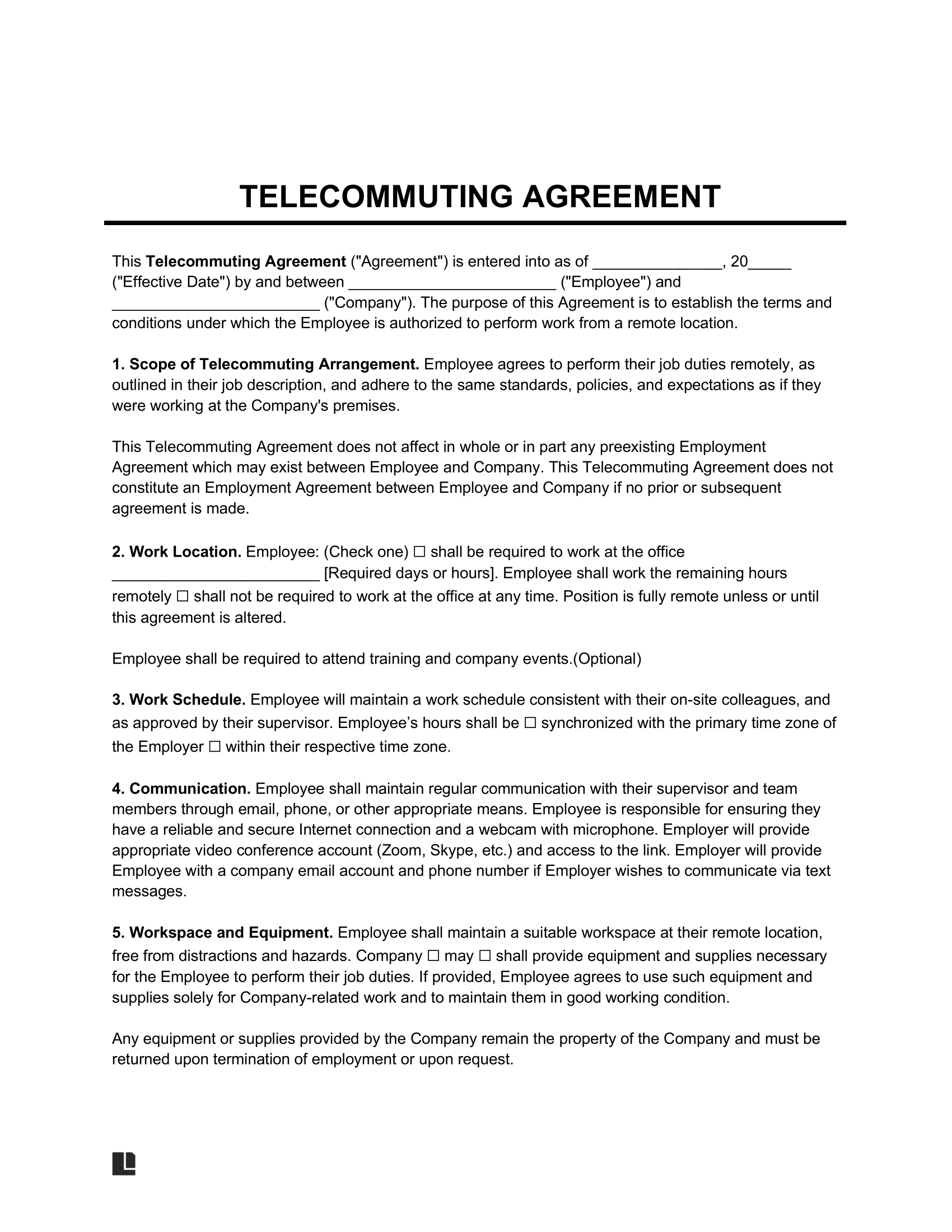Especially given everything that is going on in the world right now, more people are working remotely than ever. This is a trend that has impacted virtually every industry that you can name. That is ultimately why a telecommuting agreement is so important – it helps ensure that all remote employees understand what is expected of them and how to meet specific basic requirements wherever they happen to be.
What is a Telecommuting Agreement?
At its core, an employee telecommuting agreement is a document that outlines the relationship between a manager and/or supervisor and the telecommuter in question during a remote work situation. One of the major concerns of employers everywhere is that if employees aren’t physically present in a place of business, they cannot be supervised. Therefore, they cannot be guaranteed to meet specific productivity benchmarks.
A telecommuting agreement helps to relieve at least some of these concerns, clearly communicating what someone has to do while working remotely, how they are expected to perform, and even where they can work moving forward.
When to Use a Telecommuting Agreement
Regardless of the size of your business or the type of industry you’re talking about, it’s always essential to use a telecommuting agreement whenever a remote work situation occurs. You’ll want to communicate all expectations and have the employee sign the document, showing that both parties acknowledge how the situation is expected to continue and for how long.
What to Include in a Telecommuting Agreement
When creating an employee telecommuting agreement, you want to be as thorough as possible. Therefore, the elements that you’ll want to include are the like:
- An overview of when the telecommuting arrangement begins and when it ends or needs to be renewed.
- An expectation of the total number of days the employee still has to come into the office, if applicable.
- Acknowledgment that the dates, obligations, responsibilities, and conditions of someone’s employment remain unchanged even though they’ll be working from home.
- Acknowledgment that if an employee needs to take sick leave or intends to go on vacation, these things still have to go through proper approvals.
- An outline of an employer’s expectations that the employee will work from a secure location. For example, they shouldn’t perform important work duties from a public Wi-Fi network, which is a significant cybersecurity risk.
- An outline of anything the employer will pay for, including business-related expenses like communications technologies.
- A place for both the employee and their employer to sign and date the telecommuting agreement, thus making it official.
How to Write a Telecommuting Agreement
When writing a telecommuting agreement, follow the below steps:
Step 1 – Begin With What Remains the Same
Start your telecommuting agreement by outlining everything that remains the same about the employee’s conditions of employment. This includes how many days a week they are expected to work, what hours they are expected to work, what your overtime or paid sick leave policy is, etc.
Step 2 – Outline Special Conditions
Then, go into detail about everything unique to remote work. If you expect an employee to have a dedicated phone line that can be used to contact them, that needs to be included so they are aware ahead of time.
Step 3 – Sign and Date the Document
Finally, ensure the document is signed and dated by the employee and their supervisor. This will instill a level of accountability for both parties moving forward.
Telecommuting Agreement Sample
Below, you can download a telecommuting agreement template in PDF and Word format:
